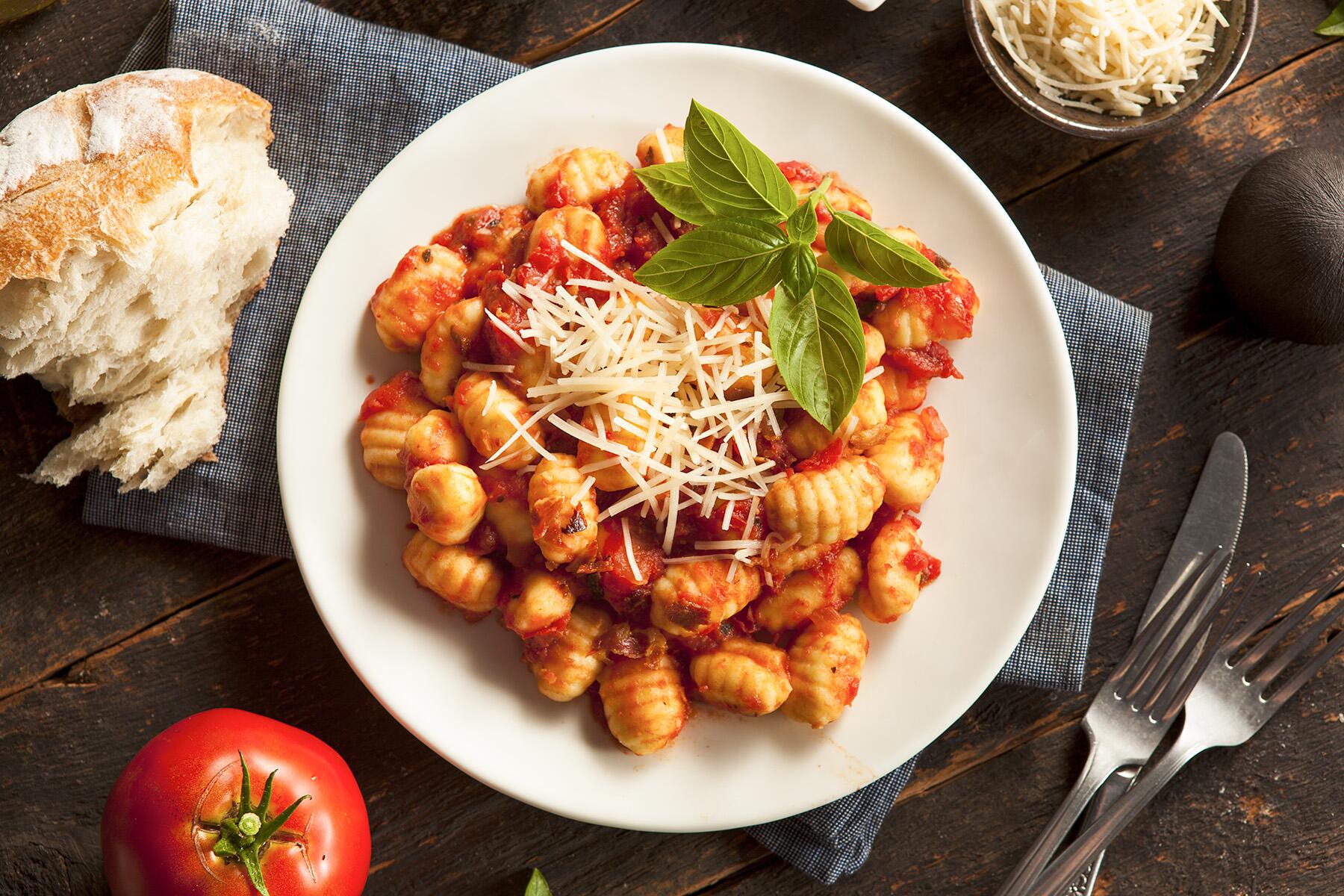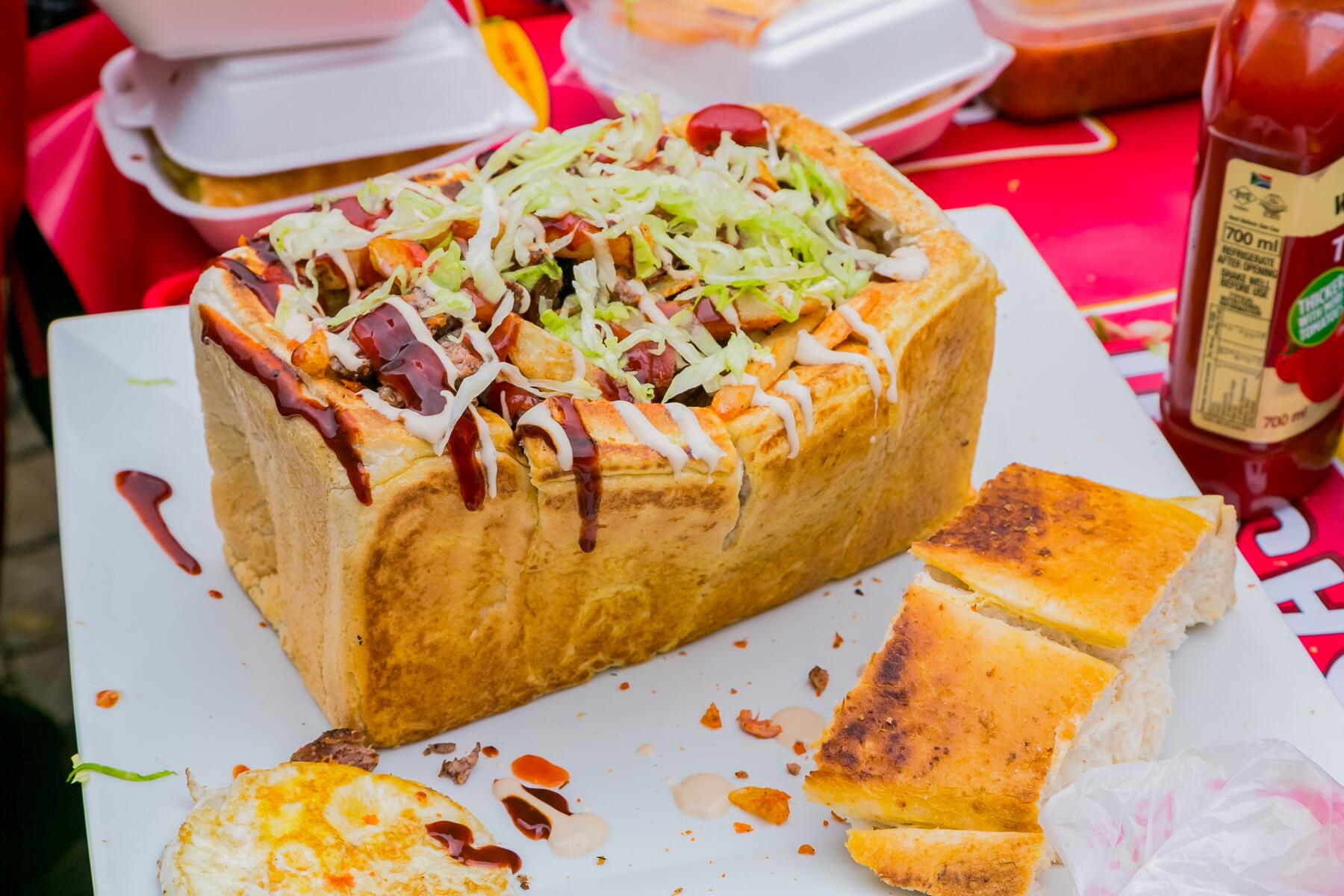Bunny chow looks like a sandwich that’s been beaten up after a night of heavy drinking and then forced back on its feet.
A curry is stuffed into a hollowed-out loaf of white bread, allowing the walls of the bread to soak up the juice. Frequently, the center is lamb or chicken, but bean curry is out there for vegetarians, too. Today, it’s common for chips, fish, trotters, or mutton to be included. It’s delicious and, as utensils are not encouraged, a bit of a glorious mess to eat.
The dish is the product of a truly unusual history. Few places manage to be a global crossroads in quite the way that South Africa does. Today, South Africa proudly leans into its identity as a “rainbow nation,” but the country’s diversity came about because of violent domination and imperialism. That rainbow nation status is an attempt to move past wars of conquest, forced migration, racism, and apartheid, the system of racial segregation that dominated the country from 1948 to 1994. South Africa’s culture, including its food, developed from one set of forces driving people together and another set of forces trying to keep them apart.
Nowhere can that be seen more clearly than with bunny chow, a dish created by migrant Indian workers who came to South Africa. Though it’s part of the Indian diaspora, it would be unfamiliar to Indians in most other places, but it’s a beloved dish in a country where people of Indian descent make up about 2.5% of the population.
Recommended Fodor’s Video
How Did This Come About?
In the nineteenth century, the British Empire was at the height of its power, and at the center of its power was India. India was Britain’s largest colony and its greatest source of wealth. Part of that wealth was cheap labor; with the end of the slave trade, British merchants and settler-colonists needed large numbers of workers. European agents traversed rural India and recruited people to work overseas on sugar plantations, in factories, and building railroads. These contracts were long, dangerous, and exploitative: workers received a pittance and often had no way to make it back home. The result of this was a diaspora of Indian people across the globe.

While all of this was happening, various parts of South Africa were brought under British domination. Beginning in the 1860s, Indian indentured laborers were sent to South Africa to work on sugar plantations in the province of Natal. While many laborers left as soon as they were able to, some remained in South Africa. They found work as clerks, railroad laborers, and shopkeepers. They also encountered considerable racism, especially when they competed economically with white South Africans. Well before apartheid began, provinces like Natal and the Transvaal passed laws preventing Indians from voting, working in the mining industry, or even sharing the sidewalk with whites. Mohandas Gandhi, then a young lawyer, arrived in South Africa in 1893 and stayed for several years to organize resistance to racist laws.
How Did We Get to Bunny Chow From This?
It’s a food with a murky history, in part because of all the discrimination that Indians faced. The most popular theory about where the food came from goes back to the migrant laborers in Natal. They were looking for an easy way to carry their curries to work, and putting them inside bread was one way to do it.
They didn’t have access to roti, but cheap white bread wasn’t too difficult to find. How it got the name “bunny chow” is a bit more of a mystery. One theory is that members of the Banias caste were selling them in Natal, and the name was bastardized from Bania to bunny, and then stuck.
What helped to popularize the food, in a cruel twist of fate, was apartheid. There’s a theory that apartheid practically created the food: Black South Africans who were prohibited from eating in restaurants needed something that they could easily take away, and bunny chow fit the bill. This is also likely how meat came to be a standard bunny chow filling. It soon spread outward from Durban through all of South Africa, becoming an accessible fast food. Similar bread loaf feasts, such as the spatlo, became popular in Johannesburg, with the influence of bunny chow behind them.
What Should You Expect When Eating Bunny Chow?
The curry leans on certain ingredients that are common in South African cuisine, such as cardamom and turmeric, and it tends not to be too spicy. Vegetarian bunny chows are common, but mutton is especially popular. Specialty shops like Capsicum in Durban offer up more specialized bunnies with prawns or trotters, but it’s good to start with the basics. A grated carrot and onion salad known as sambal is a common side with this dish, along with achaar, a kind of Indian pickle.
You can find bunny chow all over South Africa, but it’s a Durban institution, and the best bunny chow shops are all there. It’s sold in quarters (“kotas” to locals) or halves, and a quarter is enough lunch for all but the hungriest of people. Many of the original places have closed down: the end of apartheid opened up opportunities for people, and many once denied a chance at education have moved on. The Victory Lounge, one of the most popular restaurants selling bunny chow, closed back in 2017. Other restaurants have moved out to the suburbs and away from downtown. Still, some of the old shops remain in place, like Patel’s Vegetarian Refreshment Room. Opened in 1912, it has only vegetarian bunnies and is a way to step back and see how these were originally served.




